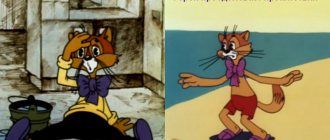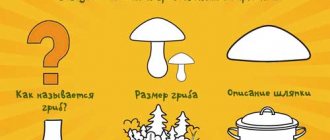Progress of the lesson:
Educator: Guys, have any of you been to a fairy tale ? Do you want me to help you with this? I have a wonderful magic wand, with the help of which you and I will find ourselves in a fairy tale . I suggest you close your eyes and listen carefully to the magic spell. Ready?
(Moving into a fairy tale with the help of magic)
I'll take the wand in my hands
I will call on the magic
A miracle will come to visit us,
It will take us to .
One, two, three, four, five eyes can be opened!
Educator: Guys, look, what is this? (problematic question)
What
fairy tale do you think these objects are ? (pies, apples, feather and jelly)
What
fairy tale have we found ourselves ? (
Swan geese ) .
(Message of the purpose of this lesson )
Educator: Guys, today we not only found ourselves in a fairy tale , but we will also become actors who will turn into the heroes of this fairy tale . Let's first remember this fairy tale .
(Restoring the sequence of a fairy tale using questions to children)
Educator: Guys, why is the fairy tale called Geese and Swans ? Where did the geese take your brother ? And who saved Ivanushka? Tell me, what heroes did your sister meet along the way? Look who Alyonushka met first. (slide)
Did these heroes help her?
Why? Let's you and I become capricious Alyonushkas and refuse everything that is offered to us. Say that you don’t want sour apples, pies and jelly. (Showing whims)
What happened to her next? And to remember how they returned home with their brother, you and I will sit down at the tables.
in my fairy tale , would you like to look at them? (introduction to the tablet and how to use it)
Educator: They also know how to show fairy tales . Oh, what happened? Is everything right here? The pictures are mixed up.
(Showing the method of operation with a tablet)
Educator: Find the picture with which our fairy tale . Found it? Place your finger on the magic button next to the picture. Now find the number 1 and place another finger next to it. Now, take a magic rubber band and connect one button to another. Happened? Great! Remember what happened next? Find the number 2 and connect these two buttons with a rubber band. Now try to find the continuation of the fairy tale and connect the pictures with the desired number.
(Children’s independent work on tablets)
.
Educator: Take off your magic rubber bands for now and look at the pictures.
(Self-test on work performance)
Educator: What a great fellow you are, guys! What do you think Alyonushka experienced when the geese carried away her brother Ivanushka? (Fear)
.
Who else was afraid in this fairy tale ? (Brother)
.
What was he afraid of? (What
the geese carried away , Baba Yagi) . You have a pocket in the middle of your tablet, and in it there are pictures with different moods. Find a picture that shows that the girl was scared?
(Looking at pictograms with emotions of fear and joy)
.
Educator: Insert it into the pocket opposite the girl. Is there another picture where the girl is scared? Connect these pictures with rubber bands. (Check in pairs)
.
Educator: Guys, do you ever get scared? When are you scared? What are you afraid of? Show how scared you are. Look at yourself in the mirror, at your face. Look at others, how scared they are. Now find a picture with joy. Show us how we can rejoice. Look in the mirror at your joyful face.
(Living in the game of dramatization of studied emotions )
.
The game is repeated 3 times: at the river, apple tree and stove)
Educator: Guys, what do you like more, to be happy or afraid? Why? What was easier to portray fear or joy? Are you glad that you were able to play such complex roles? Then give yourself a round of applause.
Guys, today you didn’t just travel , but like little actors you learned to recognize and show fear and joy. And so that your joy lasts longer, I want to give you magic medals depicting the emotions that we have learned to recognize and play with today.
Smile more often! Goodbye, guys!
Summary of an integrated lesson in the senior group. Topic: Director's play based on the Russian folk tale “Geese-Swans” Pedagogical goal Development of artistic, creative and cognitive abilities, emotional responsiveness, improvement of all.
Summary of educational activities for teaching literacy in the preparatory group “Journey through the fairy tale “Geese and Swans” Summary of educational activities for teaching literacy in the preparatory group Topic: “Journey through the fairy tale “Geese and Swans” in the preparatory group Integration.
Summary of the lesson in mathematics “Journey through the fairy tale “Geese-Swans” Topic: “Journey into the forest for Ivanushka” Topic: Journey through the fairy tale “Geese-Swans”. Goal: formation of mathematical and sensory concepts.
A mathematical journey through the fairy tale “Geese and Swans” in the middle group. Summary of educational activities in mathematics in the middle group based on the fairy tale “Geese and Swans” Integration of areas: • “Physical development”.
Summary of GCD for FEMP based on the fairy tale “Geese-Swans” “Mathematical journey through the fairy tale Geese-Swans” Program content: Consolidate knowledge about the composition of the numbers 6 and 9 from two small numbers.
Design for the fairy tale “Geese and Swans” In mid-November, the children of the senior and preparatory groups of our kindergarten are preparing to show the musical fairy tale “Geese and Swans” for their parents.
Physical education lesson based on the fairy tale “Geese-Swans” Purpose: To practice walking and running in a column one at a time, walking on tiptoes with high knees, stepping over objects.
Source
Summary of educational activities for reading fiction for children of the middle group “Geese and Swans”
Oksana Dolgusheva
Summary of educational activities for reading fiction for children of the middle group “Geese and Swans”
Topic: Reading the fairy tale “ Geese and Swans ”
Integration of educational areas “Cognition”
,
“Communication”
,
“Socialization”
,
“
Reading fiction ” Goal: Introducing children to the origins of Russian folklore through a fairy tale.
Continue to teach children to understand the figurative content and idea of fairy tales;
Strengthen the ability to guess riddles based on descriptions
Develop emotional responsiveness to the content of fairy tales through voice and character
Pictures with episodes of fairy tales "Kolobok"
,
“The Ryaba Hen”
,
“Three Bears”
,
“Masha and the Bear”
,
“Teremok”
,
“ Geese and Swans ”
Lesson “Journey through the fairy tale “Geese-Swans” with elements of dramatization
Oksana Poftalnaya (Grigorieva)
Lesson “Journey through the fairy tale “Geese-Swans” with elements of dramatization
Goal: To develop the ability to experience the emotions of fear and joy of the heroes of the fairy tale “ Geese and Swans ”
.
a) Clarify with children the content of the fairy tale and its sequence using problematic questions.
b) To develop in children the ability to make inferences.
c) Exercise children in conveying feelings through elements of dramatization .
a) Develop verbal and logical thinking.
b) Develop the ability to recognize, name and experience emotions of fear and joy.
a) Cultivate a sense of empathy for the heroes of the fairy tale .
b) Foster a desire for cooperation, goodwill, independence, and initiative.
Visual: demonstration and presentation of a fairy tale on an interactive board.
Verbal: problematic questions, conversation based on a fairy tale , explanation of doing work on a game tablet.
Practical: demonstration of work with a gaming tablet, students independently performing practical actions on tablets, exercises to develop facial expressions, using elements of dramatization to consolidate learned emotions in class .
Equipment: interactive board, set of items based on the fairy tale : apples, pies, jelly, feathers, images of an apple tree, stove, river (blue fabric)
.
Handouts: game tablets for each child, cards depicting scenes from the fairy tale “ Geese and Swans ”
, pictograms of emotions of fear and joy.
Organization of the lesson :
Children enter the group and stand in a circle near the teacher. Nearby there is an interactive whiteboard and a table with the necessary aids for the organizational moment. There are tables in the group with gaming tablets for children to work independently.
LESSON PLAN :
Magical movement using a magic wand into a fairy tale .
State the purpose of this lesson .
1. Problem question: “What fairy tale are these objects ?”
2. Restoring the sequence of a fairy tale using questions to children.
3. Getting to know the tablet and how to use it.
4. Independent work of children on tablets.
5. Self-check of completed work.
6. Examination of pictograms with emotions of fear and joy.
7. Exercise to develop facial expressions of fear and joy using mirrors.





